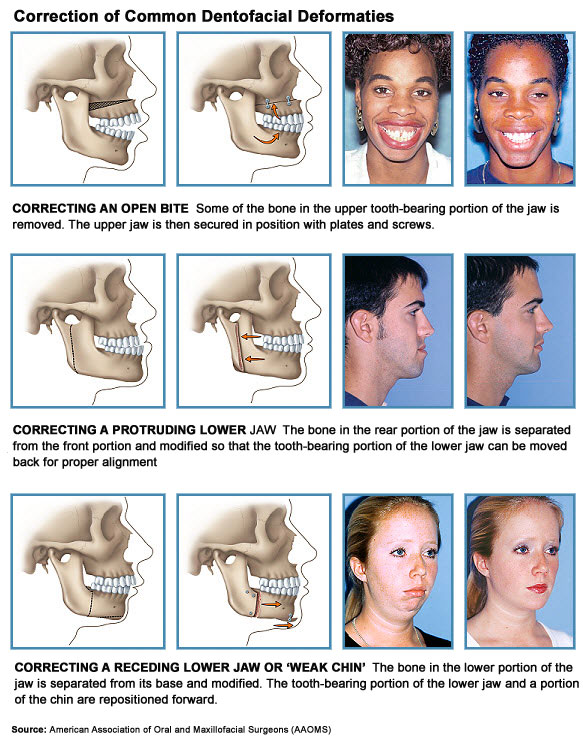Surgical Orthodontics
At Greater Vancouver Orthodontics, we perform surgical orthodontic treatments to help correct jaw irregularities, and to improve facial symmetry, which can affect a patient's ability to speak, eat, and breathe.
What does surgical orthodontics involve?
Surgical orthodontics (or 'orthognathic surgery') helps repair jaw irregularities to improve a patient's ability to breathe, eat and speak properly. His or her facial appearance can also be changed as well.
Since moving the jaws means the teeth move as well, braces are a necessary part of jaw correction. This helps ensure that teeth are in the correct positions after surgery.
Who is a candidate for surgical orthodontics?
Surgical orthodontic treatments are for adult patients whose jaws are finished growing, and who have bite problems, as well as for those with concerns about facial aesthetics.
In girls, jaw growth is usually complete by the age of 16, and for boys, at 18.
Before jaw surgery can be performed, jaw growth must be completely finished. Pre-surgical tooth movements can be started a year or two prior, however.
How does surgical orthodontics work?
Orthodontic treatment is usually about 6 to 18 months in duration, though this can vary from patient to patient.
During orthodontic treatment and before and after jaw surgery, the patient will wear braces, and visit the orthodontist for regular adjustment appointments.
As the teeth move with the braces, many patients feel as though their bite is actually getting worse instead of better, but this is only because the jaw alignment portion of treatment has not yet taken place.
After the jaws are properly aligned during orthognathic surgery, the teeth will fit comfortably into their proper positions.
What takes place during surgery?
Orthodontic surgery is performed by an oral surgeon at the hospital. Depending on the type of surgery, it can take several hours. In lower jaw surgery, the jawbone behind the teeth is separated, and the tooth-bearing portion of the jaw is adjusted either forward or backward.
In upper jaw surgery, the jaw may be repositioned forward or backward, or it may be raised or lowered. Certain movements might require the jaws to be separated, and bone added or removed to achieve the desired alignment and stability. Other facial bones that contribute to alignment may also need to be augmented or repositioned.
How long does recovery take?
Once the surgery is complete, most patients are able to return to work or school after about two weeks.
After your healing time is complete (about 4-8 weeks), your orthodontist will work on "fine-tuning" your bite.
In most cases, patients have their braces removed about 6 to 12 months after surgery.
Once the braces are off, you'll wear a retainer (either full or part-time) in order to maintain your new smile.

